
Home |
||
|---|---|---|
Before the exhibitions |
Eight Impressionism exhibitions |
After the exhibitions |
|
||
German Painters
Nazarenes, Biedermeier period, Romanticism
19th century until approx. 1880
Nazarenes
In the first half of the 19th century, there were many attempts by young artists in Europe to escape the prevailing classicism, but also that of Ingres and the subsequent romanticism of Delacroix, and above all the constraints of the academies. It became increasingly difficult for young artists to identify with these artistic movements and doctrinal views. "You learn to paint an excellent drapery, draw a correct figure, learn perspective, architecture, in short everything - and yet you don't emerge as a real painter. One thing is missing ... heart, soul and feeling ..." (Friedrich Overbeck) As early as 1809, painters had formed the 'Lukasbund' at the Vienna Academy.
Their world view was the Christian German Middle Ages, as a result of which they called for the renewal of religious tradition in art. The motto of the Lukasbund was: "Let us therefore transform our lives into a work of art". Their role models were Dürer and especially Raphael, who were regarded more as 'primitives' in the academies at the time. So what sounds like a step backwards is nevertheless a break with the classicism of the academies, in which the technical side took precedence over artistic skill. Friedrich Overbeck and Franz Pforr, Joseph Wintergeist and Ludwig Vogel, who began their training as painters in Vienna, initially stood for this Lukasbund. After failing to make a name for themselves at the Academy, they tried to live together in the abandoned monastery of Sant'Isidoro near Rome. Due to their appearance with long hairstyles like in the Middle Ages, the Lukas brothers quickly earned the nickname 'Nazareni' in Italy.
Johann Friedrich Overbeck
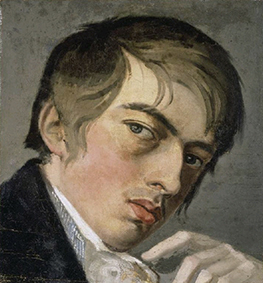
Self-portrait 1807
* 3. 7. 1789 in Lübeck; † 12. 11. 1869 in Rom
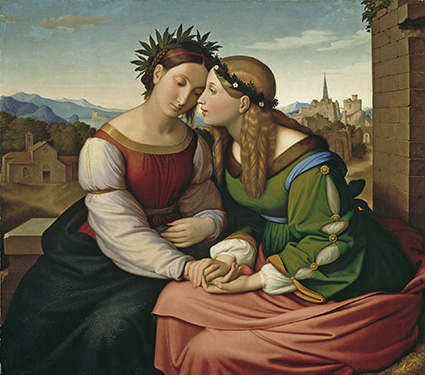
Italia und Germania
1828 - 94 x 105 cm - Oil on canvas
Neue Pinakothek, München, Germany >
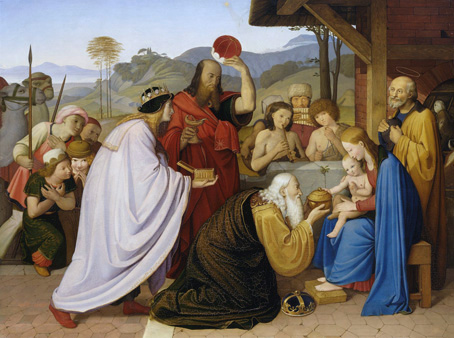
Die Anbetung der Könige
1811/13 - 50 x 66 cm - Oil on wood
Hamburger Kunsthalle, Germany >
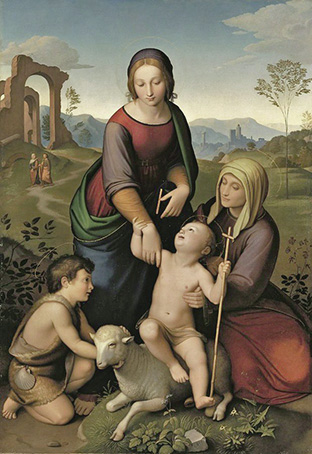
Maria und Elisabeth mit dem Jesuskind und dem Johannesknaben
1825 - 146 x 102 cm - Oil on canvas
Neue Pinakothek, München, Germany >
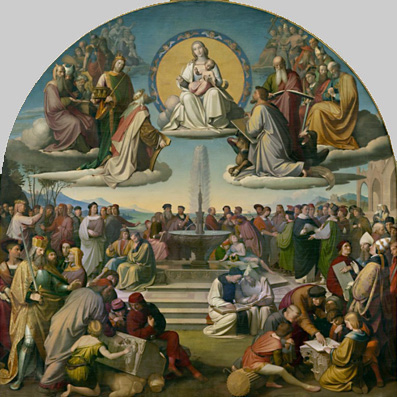
Der Triumph der Religion in den Künsten
!829/1840 - 392 x 392 cm - Oil on canvas
Städel Museum, Frankfurt am Main, Germany >
Franz Pforr
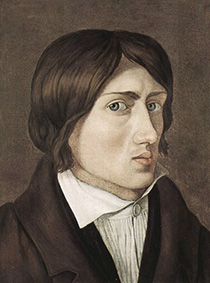
Self-portrait 1810
* 5. 4. 1788 in Frankfurt am Main; † 16. 6. 1812 in Albano Laziale bei Rom
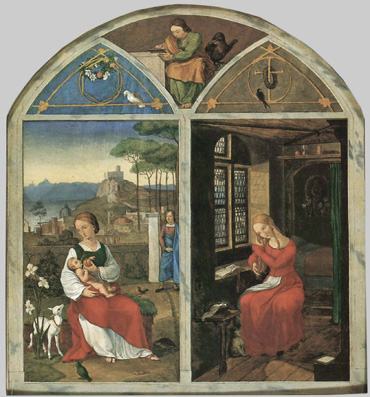
Sulamith und Maria
1811 - 34,5 x 32 cm - Oil on wood
Museum Georg Schäfer, Schweinfurt, Germany >
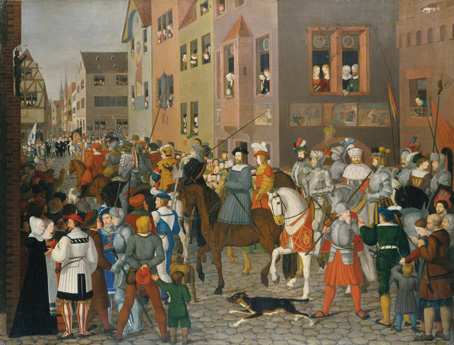
Einzug Kaiser Rudolfs von Habsburg in Basel, 1237
1809/19 - 90 x 119 cm - Oil on canvas
Städel Museum, Frankfurt am Main, Germany >
The artists therefore decided to take their training into their own hands and continue it in Italy. In Rome, they formed a kind of artists' colony to study Italian models and led the life of outsiders. However, they were not looking for antiquity, but for Christian Rome. The group of St Luke's Brothers attracted other painters. The existing group was joined by Julius Schnorr von Carolsfeld, Peter von Cornelius and Wilhelm von Schadow.
Julius Schnorr von Carolsfeld
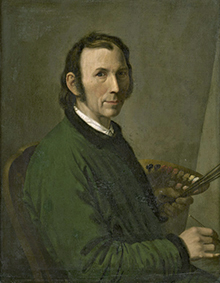
Self-portrait
* 26. 3. 1794 in Leipzig; † 24. 5. 1872 in Dresden
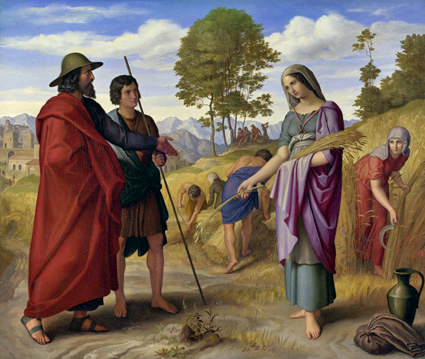
Ruth im Feld des Boaz
1828 - 59 x 70 cm - Oil on canvas
National Galery, London, United Kingdom >
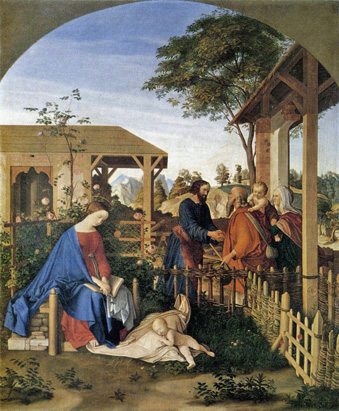
Die Familie von Johannes dem Täufer besucht die Familie Christi
1817 - 123 x 102 cm - Oil on canvas
Gemäldegalerie Alte Meister - Staatliche Kunstsammlungen Dresden, Germany >
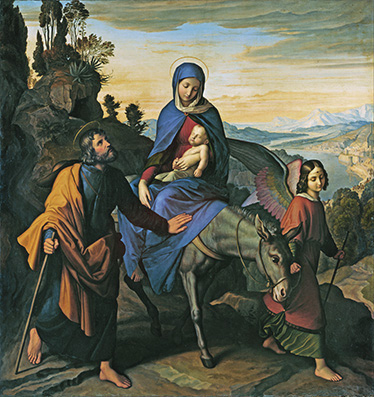
Die Flucht nach Ägypten
1828 - 120 x 114 cm - Oil on canvas
Kunstpalast Düsseldorf, Germany >
It took some time before the Nazarenes were recognised outside Italy. From around 1830, they were able to establish themselves in the German-speaking world. Some followed the call to academies, such as Ludwig Schnorr von Carolsfeld or Phillip Veit. As in Rome, some frescoes were created in churches, such as the Allerheiligen-Hofkirche in Munich. The so-called Bavarian windows in Cologne Cathedral and frescoes in Mainz Cathedral are also among the works of the Nazarenes. The church of St Apollinaris in Remagen is a kind of Nazarene Gesamtkunstwerk. Some of it was destroyed in the wars.
Wilhelm von Schadow
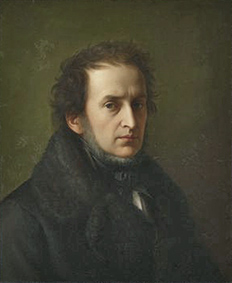
Self-portrait
* 6. 9. 1788 in Berlin; † 19. 3. 1862 in Düsseldorf
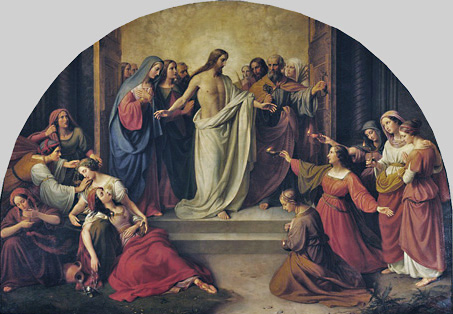
Gleichnis von klugen und die törichten Jungfrauen
1838/42 - 271 x 391 cm - Oil on canvas
Städel Museum Frankfurt am Main, Germany >
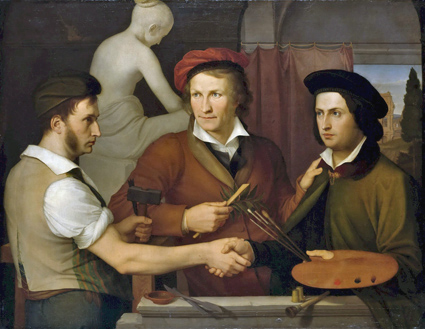
Selbstbildnis mit seinem Bruder Ridolfo und mit Bertel Thorvaldsen
1814 - 91 x 118 cm - Oil on canvas
Alte Nationalgalerie Berlin, Germany >
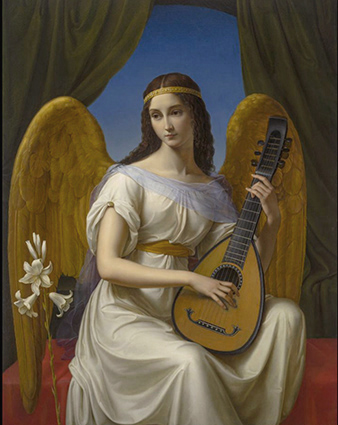
Mignon
1828 - 119 x 93 cm - Oil on canvas
Museum der bildenden Künste Leipzig, Germany >
Peter von Cornelius
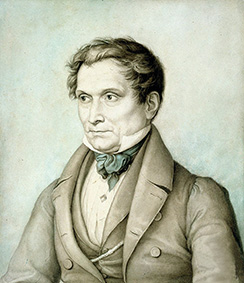
Portrait of Cornelius
(gez. Maximilian Seitz)
* 23. 9. 1783 in Düsseldorf; † 6. 3. 1867 in Berlin
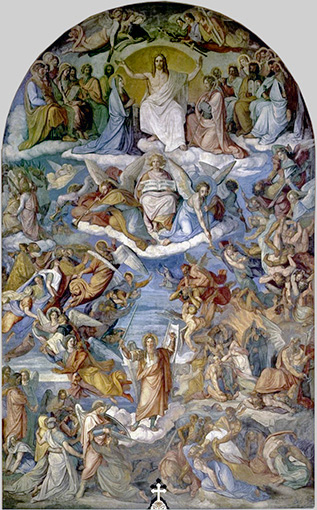
Das Jüngste Gericht
Ludwigskirche München, Germany
1836/40 - ca. 11 x 18 m - Fresco (considered the second largest fresco in the world)
Philipp Veit
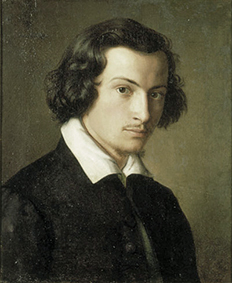
Self-portrait
* 13. 2. 1793 als Feibisch Veit in Berlin; † 18. 12. 1877 in Mainz
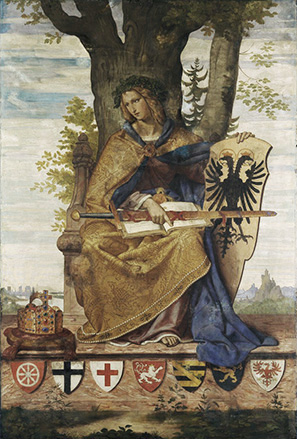
Allegorische Figur der Germania
1834/36 - 285 x 192 cm - Fresco, 1877 laminated on canvas
Städel Museum, Frankfurt am Main, Germany >
Marie Ellenrieder
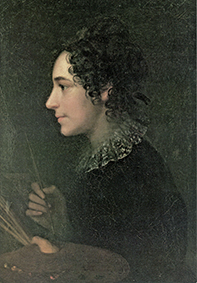
Self-portrait
* 20. 3. 1791 in Konstanz; † 5. 6. 1863 in Konstanz
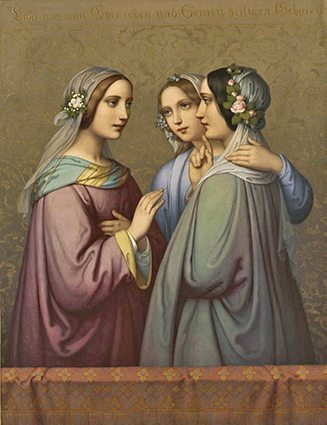
Drei Jungfrauen
1849 - 85 x 109 cm - Oil on canvas
Staatliche Kunsthalle Karlsruhe, Germany >
From 1848 onwards, this art movement experienced its decline. The common image of Nazarene art is symbolically linked to religious painting, which produced the phenomenon of cloyingly religious kitsch in popular form. The ideal of a Christian-orientated art movement had become stale. It was now regarded as an anaemic and sentimental religious metaphor, although it was still alive until the middle of the 20th century. The many low-quality and very pious images of trivial art, which also adorned many homes as prints, contributed to this.
In the last 50 years, the Nazarenes have experienced a kind of resurrection. They have been re-evaluated in various exhibitions and have now been given their rightful place in the art world.The Nazarenes had a certain influence on subsequent artists with their art. A good fifty years later, for example, Maurice Denis, co-founder of the group 'Les Nabis', also referred to them. In England, Dante Gabriel Rossetti and Everett Millais, who are counted among the Pre-Raphaelites, would see them as role models. The Pre-Raphaelites also strove for a religious and spiritual deepening of art and regarded Italian art of the early Renaissance as a model.
In Germany, the Düsseldorf School of Painting emerged, where Nazarenes such as Peter von Conelius and Wilhlem von Schadow also worked as teachers and shaped the direction in their favour. Later, late Romanticism and Realism found their way into the study programme. The subjects became landscape painting, still life and history painting.
German-Romans
Biedermeier and Romanticism
Arnold Böcklin, Anselm Feuerbach and Hans von Marées were also influenced by the Roman Renaissance. The connections to the Nazarenes were manifold, even if they went their own way. As contemporaries of the Barbizon artists and the Impressionists, however, they were still connected to the traditional craftsmanship of painting, even if they did not want to follow the attention to detail of naturalism and the romanticism of romanticism. The painters saw the world as symbols of a deeper reality and art as a mediator. The themes revolved around dreams and mythology. The pure and noble were also glorified, as was the dark side of sin.
Paul Gauguin and Odilen Redon, who took part in Impressionist exhibitions, can be seen as partly influenced by this circle in their early years.Paintings by the group known as the German-Romans (Deutschrömer), who, despite their shared love of Italy, had very different views on painting:
Anselm Feuerbach
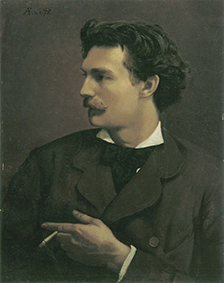
Self-portrait
* 12. 9. 1829 in Speyer; † 4. 1. 1880 in Venedig
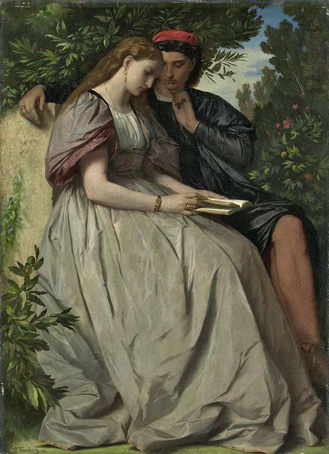
Paolo und Francesca
1864 - 137 x 99 cm - Oil on canvas
Schack Galerie - Bayerische Staatsgemäldesammlungen, München, Germany >
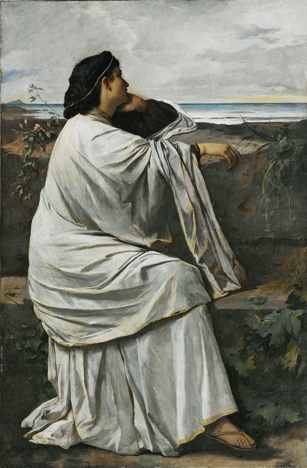
Iphigenie II
1871 - 200 x 132 cm - Oil on canvas
Staatsgalerie Stuttgart, Germany >
Johann Reinhard von Marées
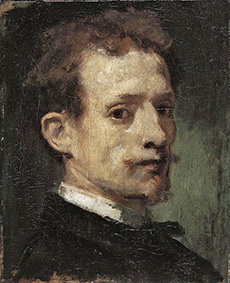
Self-portrait
* 24. 12.r 1837 in Elberfeld, (Wuppertal); † 5. 6. 1887 in Rom
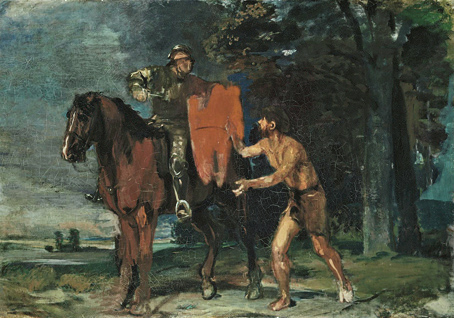
Hl. Martin und der Bettler
1869 - 74 x 105 cm - Oil on canvas
Kunst Museum Winterthur, Suisse >
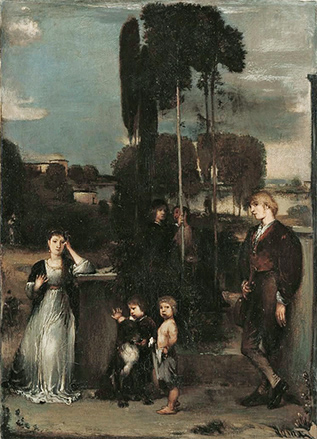
Römische Landschaft I
1868 - 153 x 110 cm - Mixed media on canvas
Neue Pinakothek, München, Germany >
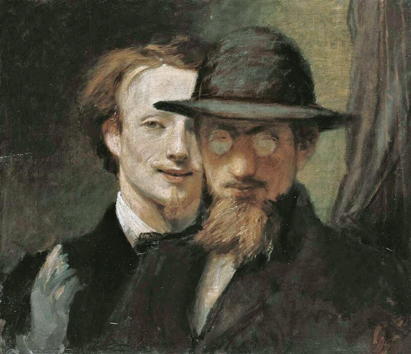
Doppelportrait von Marées und Lenbach
1863 - 54 x 62 cm - Oil on canvas
Neue Pinakothek, München, Germany >
Hans Makart
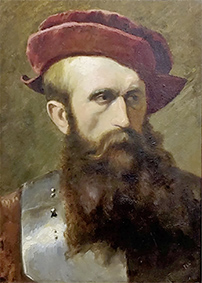
Self-portrait
* 28. 5. 1840 in Salzburg; † 3. 10. 1884 in Wien
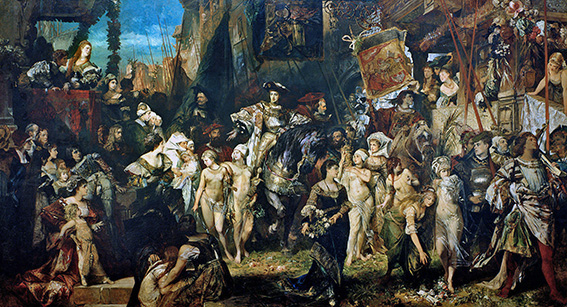
Der Einzug Kaiser Karls V. in Antwerpen
1878 - 520 x 952 cm - Oil on canvas
Hamburger Kunsthalle, Germany >
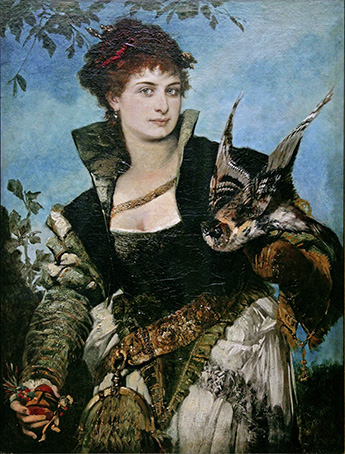
Die Falknerin
ca. 1880 - 106 x 80 cm - Oil on canvas
Neue Pinakothek, München, Germany >
Ferdinand Georg Waldmüller
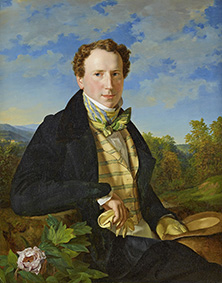
Self-portrait
* 15. 1. 1793 in Wien; † 23. 8. 1865 in Hinterbrühl / Mödling

Die Erwartete
ca. 1860 - 81 x 63 cm - Oil on wood
Neue Pinakothek, München, Germany >
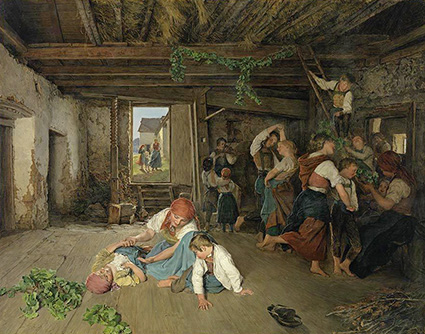
Vorbereitung zum Fest
ca. 1860 - 63 x 81 cm - Oil on wood
Neue Pinakothek, München, Germany >
Caspar David Friedrich
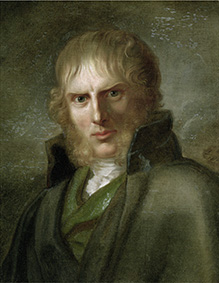
Portrait Caspar David Friedrich by Gerhard von Kügelgen
* 5. 9. 1774 in Greifswald; † 7. 5. 1840 in Dresden
Is today considered the most important artist of early German Romanticism
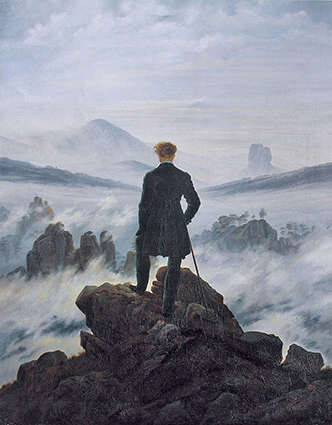
Der Wanderer über dem Nebelmeer
ca. 1817 - 98 x 74 cm - Oil on canvas
Kunsthalle Hamburg, Germany >
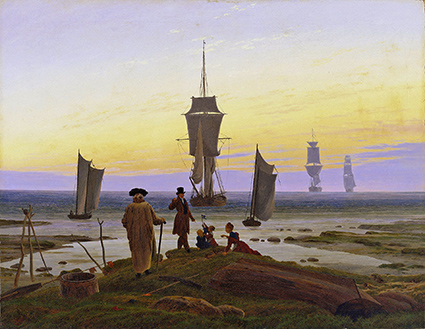
Die Lebensstufen (Strandbild, Strandszene in Wiek)
ca. 1834 - 72 x 94 cm - Oil on canvas
Museum der bildenden Künste, Leipzig, Germany >
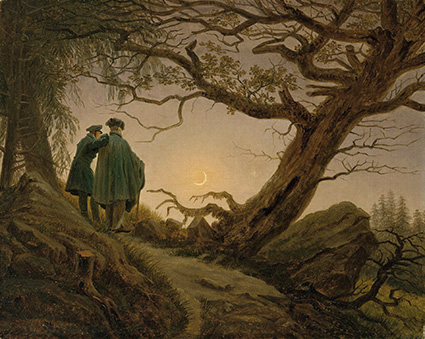
Zwei Männer beim Betrachten des Mondes
ca. 1825/30 - 34,9 x 43,8 cm - Oil on canvas
Metropolitan Museum of Art, New York, USA >
Wilhelm von Kaulbach
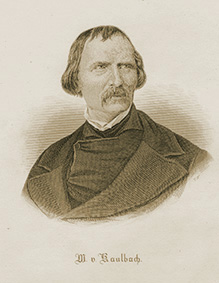
* 15. 10. 1805 in Arolsen; † 7. 4. 1874 in München
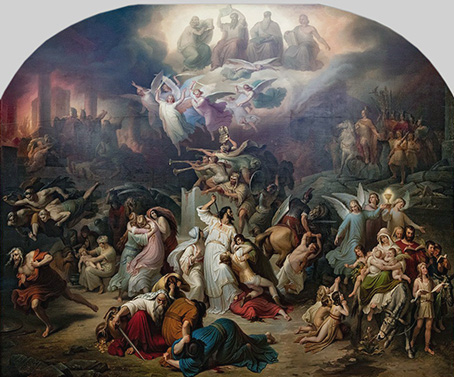
Zerstörung Jerusalems durch Titus
1846 - 585 x 705 cm - Oil on canvas
Neue Pinakothek, München, Germany >
Adolph Friedrich Erdmann Menzel,
from 1898: von Menzel
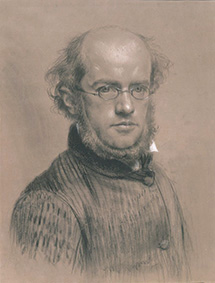
Self-portrait
* 8. 12. 1815 in Breslau; † 9. 2. 1905 in Berlin
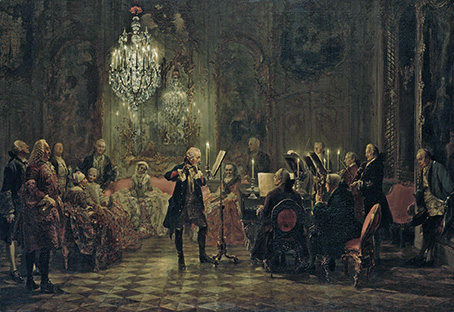
Flötenkonzert Friedrichs II. in Sanssouci
1850/52 - 142 x 205 cm - Oil on canvas
Staatliche Museen zu Berlin, Germany >
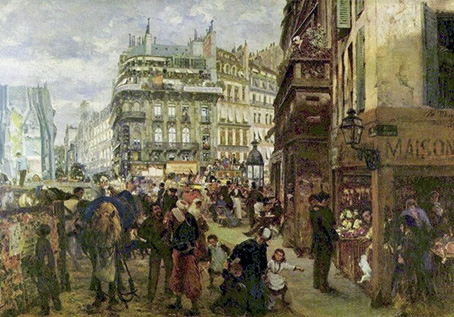
Pariser Wochentag
1869 - 42 x 29,3 cm - Oil on canvas
Kunstpalast Düsseldorf, Germany >
Franz Carl Spitzweg
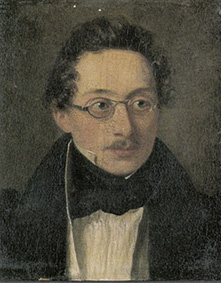
Self-portrait
* 5. 2. 1808 in München; † 23. 9. 1885 in München
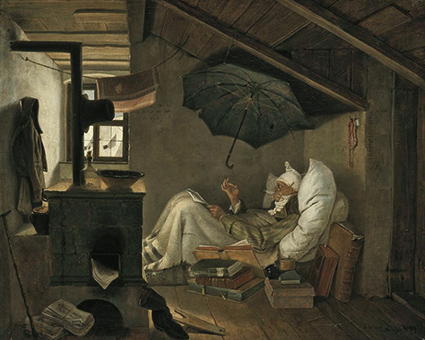
Der arme Poet
1839 - 36,2 x 44,6 cm - Oil on canvas
Pinakotheken, München, Germany >
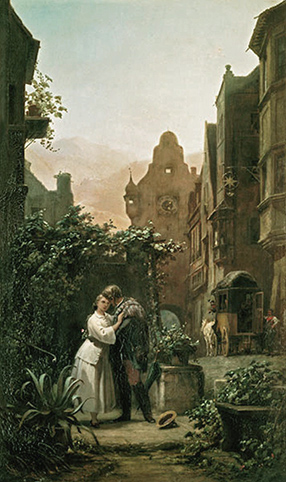
Der Abschied
ca. 1855 - 54 x 32 cm - Oil on canvas
Pinakotheken, München, Germany >
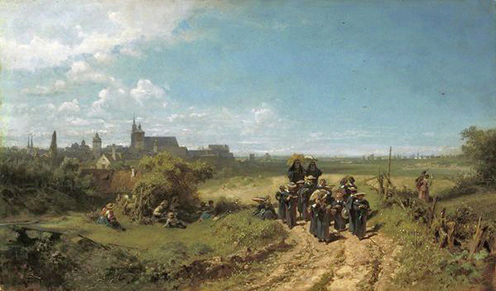
Der Institutsspaziergang
ca.
1860 - 32 x 54 cm - Oil on canvas
Pinakotheken, München, Germany >
Der Pfarrer als Kakteenfreund
ca. 1855 - 29 x 18 cm - Öl auf Leinwand (auf Karton kaschiert)
Alte Nationalgalerie, Berlin, Germany >
Ingres / Delacroix |
Gustave Courbet |
|
|---|---|---|
Imprint |